- Home
- Top German Cities To Visit
- Munich Germany Things To Do
Munich, Germany: Things To Do And The Best Attractions To See.
By: Eran Fulson / Traveler & Blogger / After 15+ years of travel across North America and Europe, I now help travelers experience Germany beyond the guidebooks with firsthand tips and cultural insights.
If you find yourself in Munich, Germany, things to do here are in no short supply. Synonymous with Oktoberfest and the nearby Bavarian Alps, there are so many more amazing things to see and do. Keep reading on to find our curated list with some of the best places to go.
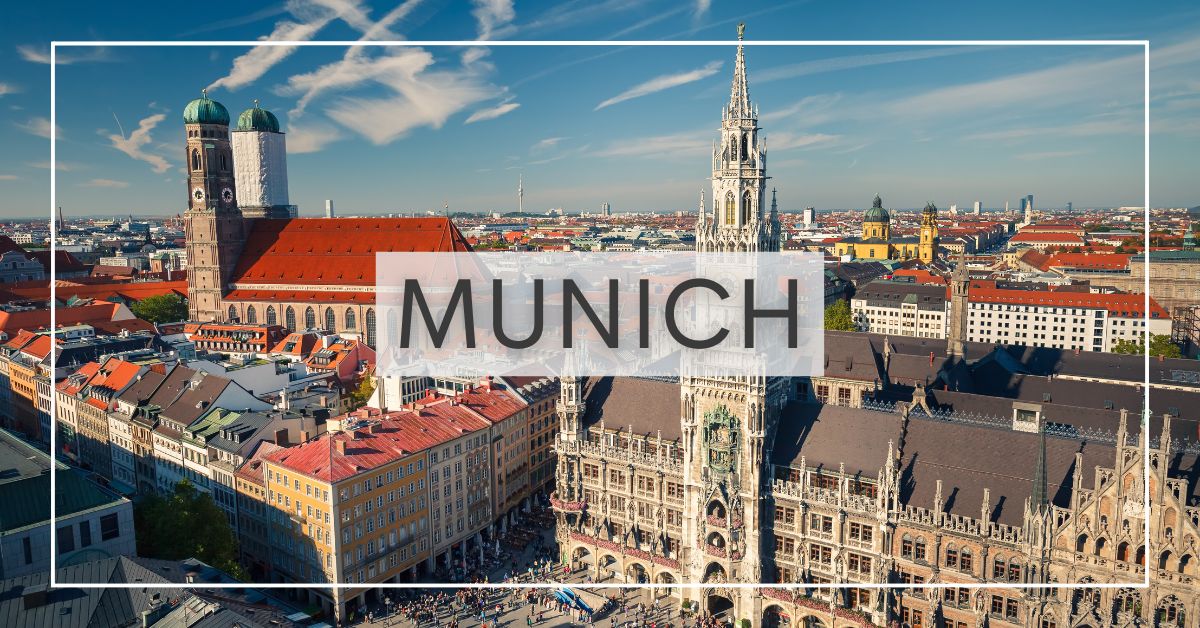
On this page:
Historically Speaking
It’s best to pack some good walking shoes before traipsing across the Bavarian capital. There are more than a few landmarks within walking distance, but it’s easy to pile on the miles before long.
The city’s humble beginnings stem from a group of monks in the early 700s AD who thought the water from the Isar River tasted good enough to build a church around it. The easily impressed monks settled down, and the settlement became known as Monch (Monk). This later became München (Munich), which translates to the Monk Settlement.
First mentioned as a city back in 1158, Munich took over from Regensburg as the capital of Bavaria in 1506. Half of the city saw extensive damage during World War II, along with nearly all of its historical landmarks.
Like its many neighbors, Munich took great pains to restore the damaged city to its original glory. Something it has accomplished in spades.
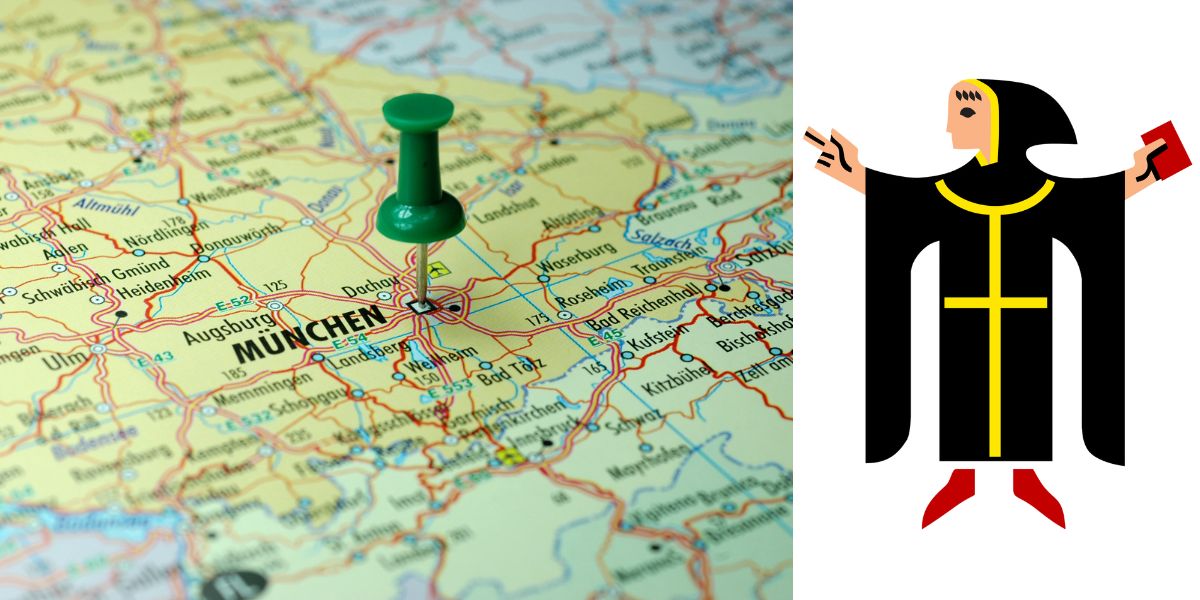 Munich's coat of arms features a homage to its founding monks.
Munich's coat of arms features a homage to its founding monks.What to do in Munich
Munich Residenz
Beginning with one of the main draws, the Munich Residenz is practically an article in itself. Its claim as the largest city palace in Germany also makes this Munich’s most popular tourist attraction, with room to spare.
Located in the heart of Munich, this palatial complex features ten courtyards and 130 rooms styled in a mix of Renaissance, Rococo, Baroque, and Neoclassicism—and here I thought painting my hallway in two colors was risky.
Formerly constructed as a castle in 1385, the resulting centuries brought expansion and grandeur along with the residing Wittelsbach monarchy.
It’s not all cordoned-off rooms and glassed-in artifacts, the Herkulessaal (New Hercules Hall) features as an intimate setting for classical and modern pop concerts. Along with the Residence Museum and Cuvilliés Theatre, there’s plenty to do here on a rainy day.

Englischer Garten
Veering away from the geometrical style of the French Baroque gardens, the Englischer Garten (English Garden) is so named for the landscaped style popularized by its British namesake. The English Garden is larger than New York's Central Park and is one of the largest urban parks in the world, covering more than 920 acres. Notable spots in the park include:
- Panoramic views of the garden and Munich from the temple-inspired Monopteros structure.
- Surfing along the Eisbach River. That’s right, surfing in Munich. The story goes that American soldiers, looking for a bit of fun, altered the river’s flow and created a surfable wave.
- Standing out from the crowd is the Chinesischer Turm (Chinese Tower), a five-story pagoda built in 1790 and currently functioning as a beer garden. Unbelievably, despite its 7,500-seat capacity, it’s only the second-largest beer garden in Munich (the largest being the +8,000-seat Königlicher Hirschgarten which is also the largest in the world). Also notable, the Christkindlmarkt (Christmas Market) at the Chinese Tower offers a less hectic option compared to the festive inner-city markets.
 Monopteros Structure - Left, Eisbach River - Middle, Chinese Tower - Right
Monopteros Structure - Left, Eisbach River - Middle, Chinese Tower - RightNymphenburg Palace
While most of us would at least proffer a welcome-to-the-world card to celebrate a birth, maybe even chipping in on a pamper hamper, we are not Bavarian royalty. They gift palaces.
Personally, I was overjoyed with my thermal mug to celebrate our firstborn. But then again, I didn’t have a hoard of servants to keep my coffee warm with a candle.
However, to celebrate the birth of Max Emanuel, Schloss Nymphenburg (Nymphenburg Palace) was constructed as a playhouse and summer residence for the royal family. The initial building took fifteen years to complete, while extensions and renovations were undertaken over the next hundred years.
Its original Baroque style architecture eventually gave way to dashes of Rococo and some Neoclassical redesigns.
The gardens, however, maintained their Baroque influence with French geometrical landscaping. So much so that the 444-acre grounds are a protected landscape and one of the finest examples of posh garden design in Germany.
In true multi-function form, a portion of the palace garden was also used during the 1972 Summer Olympics as a venue for equestrian and dressage events.

Neuschwanstein Castle: The Mad House
Though well-known for the inspiration it gave to the infamous Disneyland castle, Neuschwanstein Castle was the creative outlet for King Ludwig II. His moniker of the Fairy Tale King shifted to the Mad King after his eccentricities became exhaustingly wearisome.
Though he left behind an iconic legacy known for extravagant architectural construction, he nearly bankrupted his family doing so. While it took decades for the losses to be recouped, his artistic vision only became saleable after his early death.
Neuschwanstein Castle is now one of the biggest tourist attractions in Germany, with around 6,000 people a day visiting during the summer. Given the chance, take the horse and carriage from the village up to the castle.
We would also recommend making a day of it and visiting the nearby Hohenschwangau Castle, the former swan-festooned home of Ludwig II’s parents.
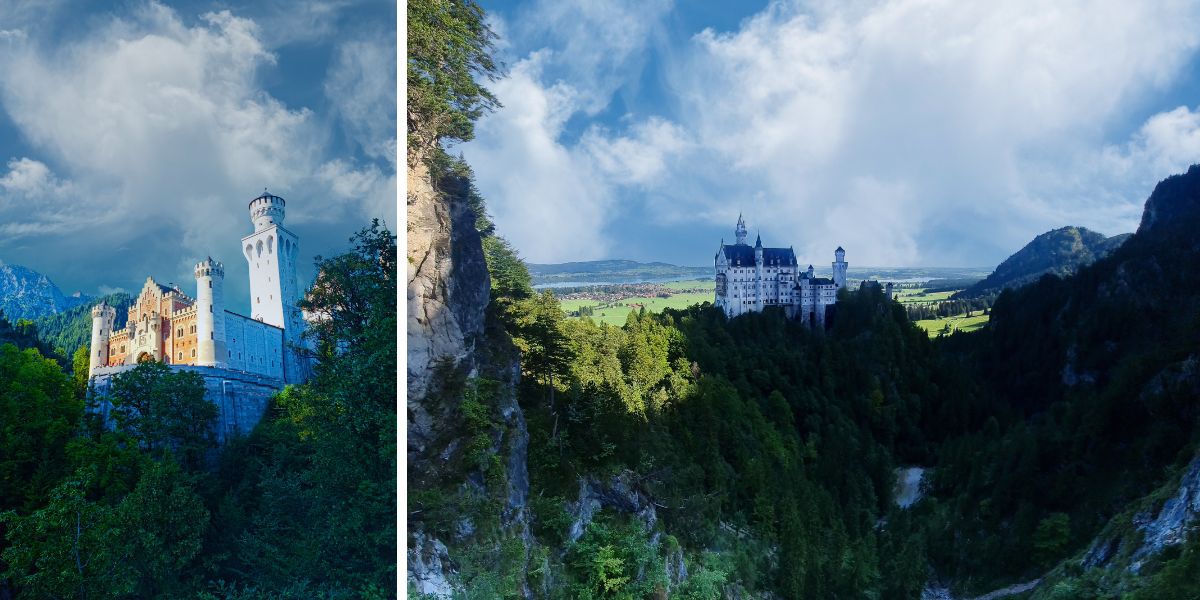
Munich Frauenkirche
Fun fact
The south tower is open to visitors and is one of the most easily accessible church towers in Germany. It’s only 89 steps up to the next level which has an elevator to the top with 360-degree panoramic views over Munich. Advance booking is recommended and can be done here.
Finding yourself in a new city often presents itself with a fairly common question, “Where am I?” Handily, the Frauenkirche (Cathedral Church of Our Lady) is easily seen from virtually every corner of Munich, provided there’s nothing in front of you.
With its twin towers rising up over 320 feet and a ban on new buildings exceeding this height, it’s a convenient marker to find one’s way. It was built in the 15th century using red bricks due to a lack of stone quarries in the region.
Staying true to its architectural resemblance of a fire station’s elegant grandmother, the Gothic Frauenkirche was rebuilt in a more simplistic fashion after the World War II aerial raids.

Interestingly, there is a so-called Teufelstritt (Devil’s Footprint) at the entrance of the church. Among the legends, he leapt for joy after thinking the builders had forgotten to include windows on the holy site, only to see them hidden by massive pillars.
It’s said that in his anger, he blew a storm to try and tear down the church. Despite failing at the time, one can still feel his breath blowing in the streets surrounding the Frauenkirche. Or it's just the wind. But hey, live a little.
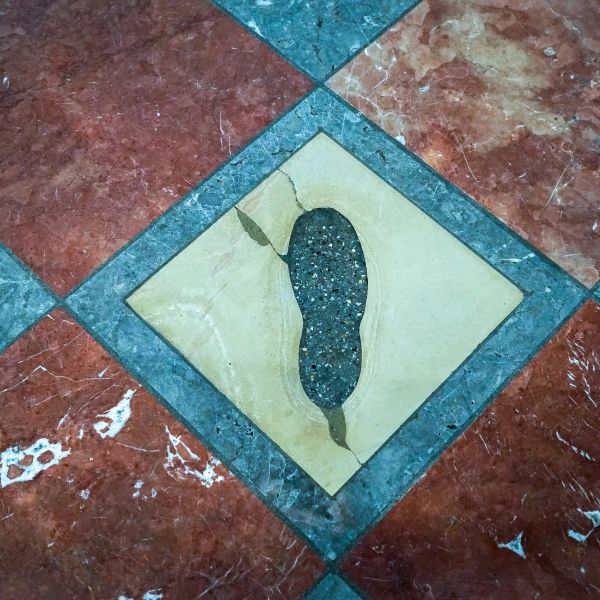
St. Peter's Church
St. Peter’s Church is one of Munich’s best-known and oldest parish churches. Comparatively, it also houses the oldest bells and first tower clocks in the city.
Though not the tallest tower to climb, with a viewing platform 300 steps up its 183-foot height, it does offer impressive views of the Munich skyline and the Marienplatz.
Internally, the pillars' golden adornments line the aisle down to the high altar before one's gaze casts up to the frescoed ceiling.

Asamkirche: Size Ain't All
The Asamkirche (Asam Church, aka Church of St. Johann Nepomuk) is both Munich’s smallest church and also its most decorated.
Built by the Asam brothers as their own private church, they created an artistic masterpiece that is truly one-of-a-kind. They bought and paid for the land themselves as a personal project. As such, without any outside interference, they designed the church exactly as they wanted.
Asamkirche is effectively a portfolio of the brother’s sculptural and painting prowess. Virtually every square inch is adorned with intricate carvings and frescoes, while only twelve rows of pews accommodate a limited number of parishioners.
Given the brother’s unhindered artistic enthusiasm, Asamkirche is one of Germany’s best examples of high Baroque style.
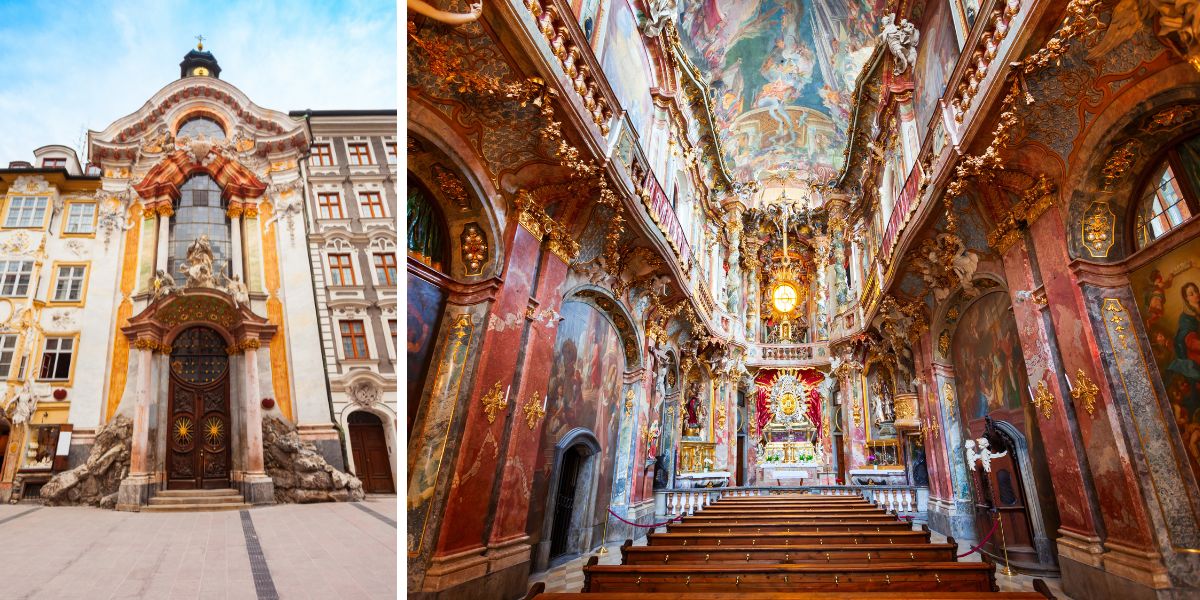 When you're paid by the hour instead of a day rate...
When you're paid by the hour instead of a day rate...Neues & Altes Rathaus
You don’t need to go very far to see the Neues Rathaus (New Town Hall) next to its neighboring Altes Rathaus (Old Town Hall).
Located at the Marienplatz in the heart of Munich, believe me when I say you can’t miss them. With drastically opposing architecture, as one would expect from a 500-year difference, the New Town Hall usurps the old, not least in size. Its Neo-Gothic style stands out from the surrounding buildings through its numerous arches and spires.
The height of summer brings out the crowds to fill the square and watch the famed dance of the glockenspiel (chimes). The balcony of the New Town Hall is also where the much-heralded FC Bayern gather to celebrate title wins, turning the Marienplatz into one massive street party.
In a turn of usual reconditioning, the Old Town Hall is not the type of museum you would think. Seemingly built for purpose, the old hall is now a toy museum. Spread across four floors, it makes for a step to the left of the typical historical memoriam with 400 years of toy development.
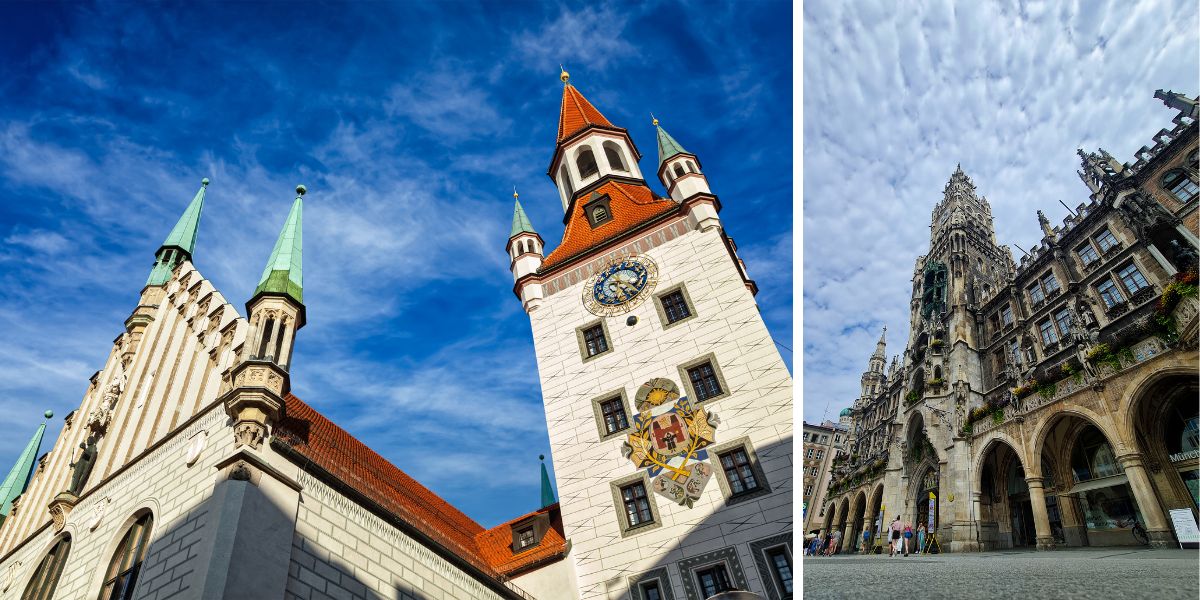 Old Town Hall on the left vs New Town Hall on the right
Old Town Hall on the left vs New Town Hall on the rightOktoberfest
I'd be remiss not to mention one of Munich's largest tourism draws: Oktoberfest.
To save writing the same thing twice, check out Lydia's post about it over at The Best Oktoberfest in Germany.
Over there, you'll find her info on...
BMW Welt (World)
DId you know?
The letters 'BMW' stand for Bayerische Motoren Werke (Bavarian Motor Works).
Whether or not you’re a car buff, the three letters of BMW are instantly synonymous with cars as much as Kleenex is to your nose. And Munich is to BMW as Stuttgart is to Mercedes - home sweet home.
The BMW Welt (World), BMW Museum, headquarters, and factory are all situated next to the Olympic Park. BMW Welt has a permanent exhibition of all their latest automotive models spread out over a length longer than a football field. Oh, and a state-of-the-art racing simulator featuring more than 50 German and international race tracks. What’s not to enjoy?
Rather ironically, or not, the architectural style of the BMW Welt building is classified as “Deconstructivism”. For a manufacturer, make of that what you will.
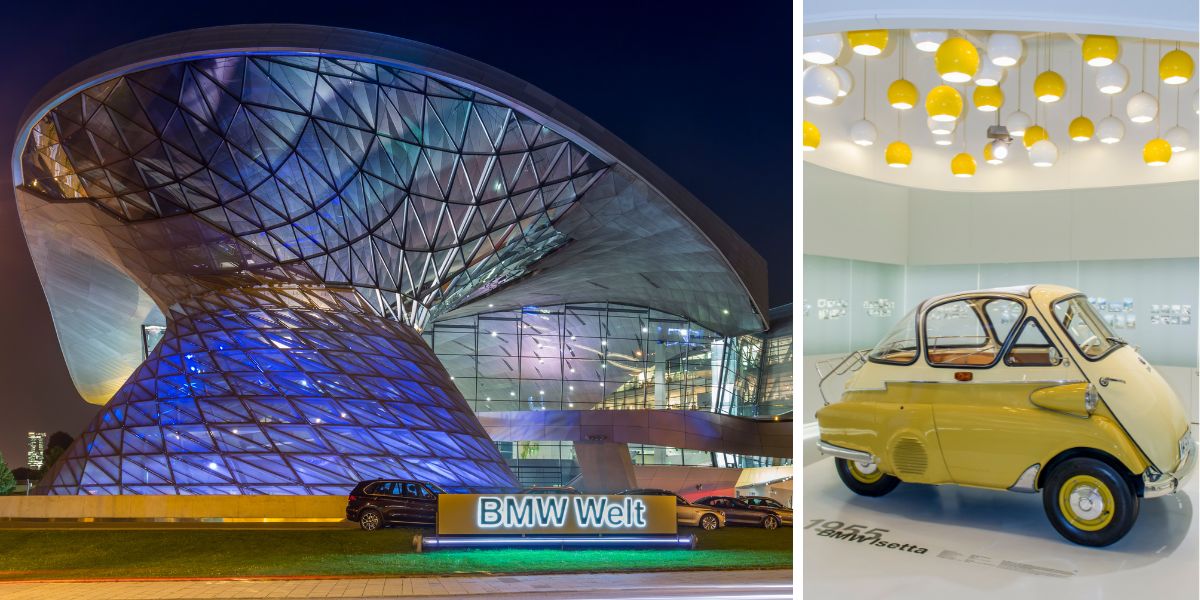 From a futuristic building to what seemed like a good transport idea in the 1950s.
From a futuristic building to what seemed like a good transport idea in the 1950s.Deutsches Museum: Go Big
Leading the way in size and scientific importance is the Deutsches Museum in Munich, Germany. For what things to do there goes beyond simply looking through glass-paned exhibits and countless “Don’t Touch” warnings.
This technology museum is heavy on engagement with numerous interactive exhibits, which is welcome news for parents who are tired of keeping their kids tethered up.
And with some 25,000 exhibits on display, there’s plenty to take in. So much so that the Deutsches Museum is easily one of the world's largest science and technology museums.
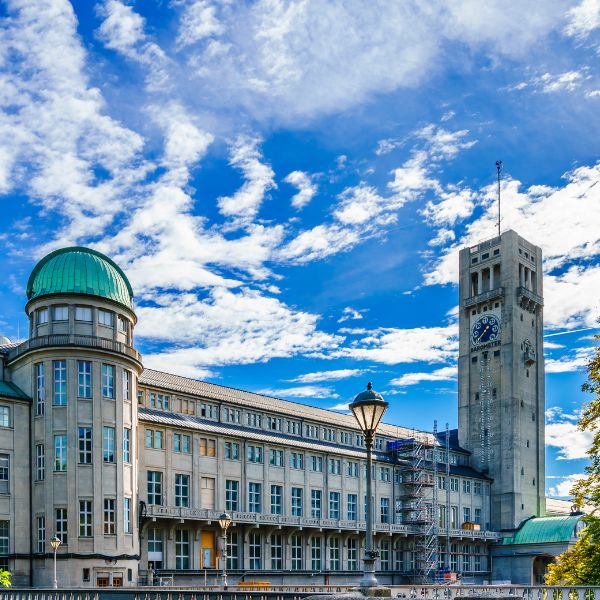
Bayerisches Nationalmuseum
The Bayerisches Nationalmuseum (Bavarian National Museum) is very much a feel-with-your-eyes venue.
On display are artistic exhibits from numerous different periods, covering more than two thousand years. Sculptures, paintings, tapestries, weapons, goldsmithing, and ivory works are only some of the internationally renowned artifacts in its collection.
Far beyond the exhibits, the museum’s architecture alone is worth a visit. A combination of Renaissance, Gothic, Baroque, and Romantic styles complement the varied exhibits as a single ensemble of artistic expression.
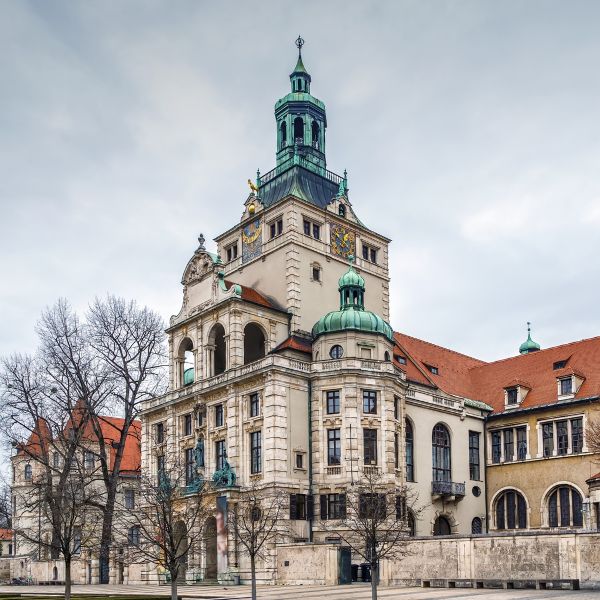
Pinakothek: The Artful Trinity
Among the architectural landmarks of Munich, Germany, things to do involving the arts are equally in no short supply.
Fortuitously, the collective of Pinakothek (Ancient Greek for picture gallery) has an extensive supply of primarily painted works from the 14th century to current trends.
First up, the Alte Pinakothek.
It is one of the most prominent art museums in Europe and home to one of the largest collections of 14th–18th century European paintings in the world. Works by Raphael, Rembrandt, Dürer, and many other masters are among the 700+ paintings on display.
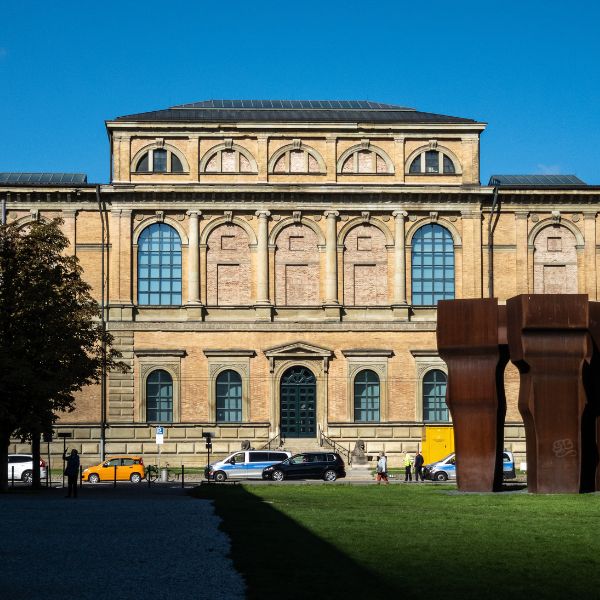
Moving up the timeline is the Neue Pinakothek. With “From Goya to van Gogh” as their motto, the museum is home to an impressive collection of contemporary art.
Among the Classicism, Romanticism, Art Nouveau, and Impressionism works are the aforementioned van Gogh, Mandy, and Cezanne, and more than a few of their friends.
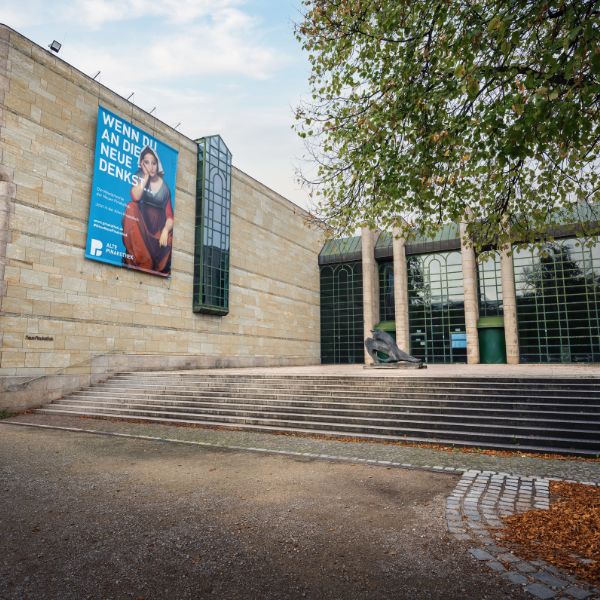
Rounding out the artistic ensemble is the Pinakothek der Moderne. Here you’ll find over 20,000 works in one of the largest international museums of modern art in Europe.
Inside the museum, you’ll actually find four smaller museums specializing in a modern art subset.
Whether it is art, works on paper, architecture, or design, the Pinakothek der Moderne is among the premier collections of modern artwork in Europe.
Gigantic Operatic
The National Theatre in Munich is home to the world-renowned Bavarian State Opera and the equally prestigious Bavarian State Ballet. The venue also features one of the world’s largest opera stages at an impressive 26,909 square feet.
After being destroyed by fire in 1825 and again during WWII, the third iteration has seen it remain the largest opera house in Germany.
More than 600,000 people attend the opera every year, with around four hundred performances gracing its stage.
While formal dress is expected, a dress code is not enforced as the opera house desires for its guests to feel comfortable. Though turning up in a robe and slippers might still garner some judgement.
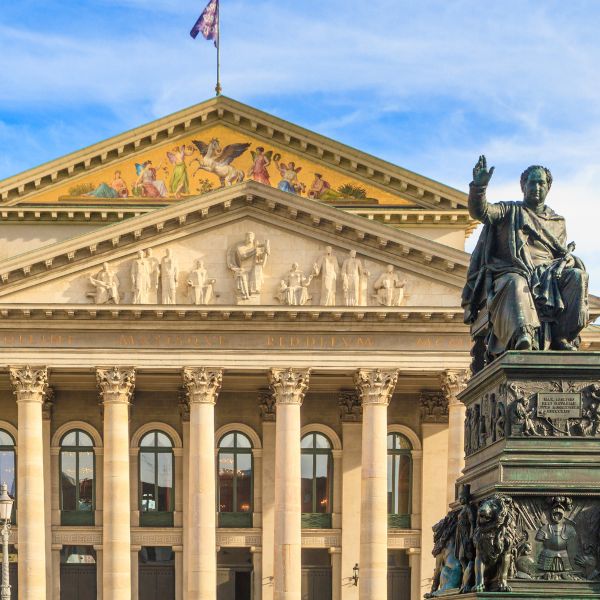
Olympic Park
Munich hit the global stage in 1972 with the Olympic Summer Games. However, once the competitive atmosphere dissipates after the closing ceremony, countries are left with the challenge of repurposing the Olympic Games venues. Some fall into disrepair and become an economic burden on the host city.
Not so in Munich, Germany. Things to do here may be far removed from the previous international competition, but they are no less appreciated by the local population.
The former Olympic Village was chosen as an experiment for urban development.
After proving a housing success, the village was given new life as a residential area where six thousand people now live. So popular is the area that residents (Olympianers) tend to stick around once they’ve settled in.
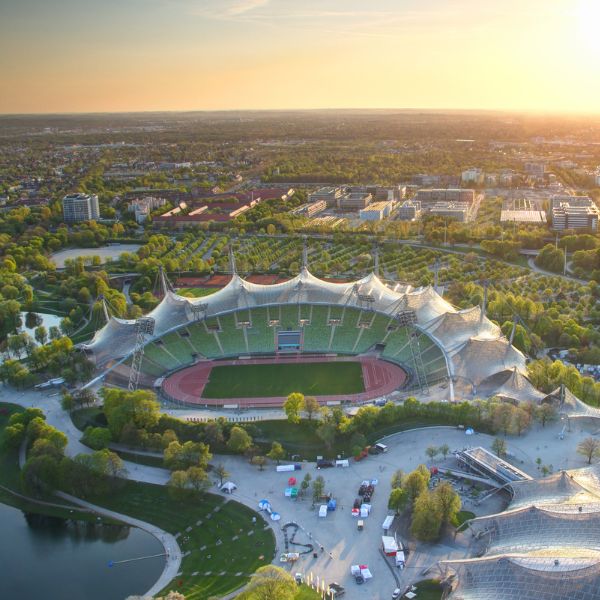
Joining in on the successful redevelopment initiative is the Olympiastadion (Olympic Stadium). One of Munich’s best-known venues, the stadium was the home of soccer legends FC Bayern München until they moved to the Allianz Arena in 2005.
Not only home to the 1972 Summer Olympics, the Olympic Stadium has been a cultural hotspot for decades and one of the most celebrated music venues in Germany.
Hundreds of thousands have attended open-air concerts by the Rolling Stones, Elton John, Michael Jackson, the Three Tenors, and numerous other musical legends.
Although perhaps one of the most unforgettable experiences when visiting the Olympic Stadium is best had up high above the grounds. Check your height-aversion at the door and grab a couple of carabiners for a tour along the tent roof of the stadium.
Aside from the awe-inducing height above the lawn, panoramic views across Munich and the Alps are guaranteed to bring a little thrill to an otherwise ordinary day.
Topping off the adrenaline rush is the 656-foot-long Flying Fox zip wire whisking across at more than 100 feet over the ground.
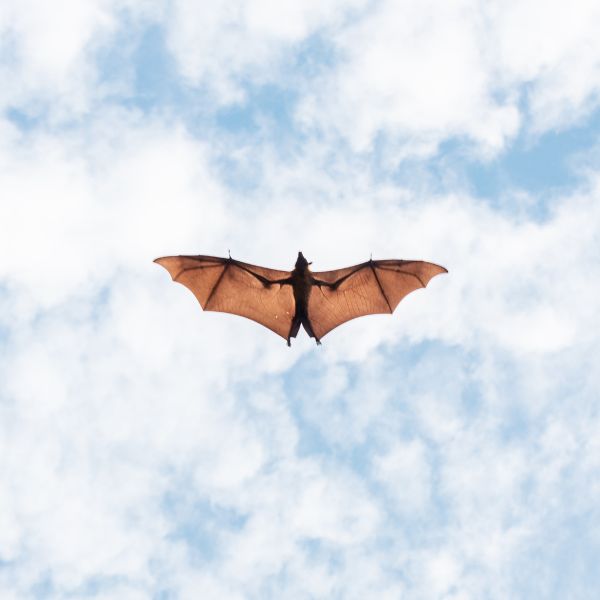 Did You Know? A flying fox is actually a species of bat. One of the world's largest with a wingspan reaching up to three feet!
Did You Know? A flying fox is actually a species of bat. One of the world's largest with a wingspan reaching up to three feet!Dachau Concentration Camp
Ten miles northwest of Munich lies one of Germany’s most notorious epicenters of the Holocaust, the Dachau Concentration Camp.
Not necessarily known for its death toll, Dachau was the first regular concentration camp established by the Nazi Party in 1933. It also served as a training center for SS guards and a model for future concentration camps.
More than 200,000 were imprisoned at Dachau, with an estimated 41,500 having lost their lives there.
After the US Army liberated the survivors in 1945, the site switched roles and served as an internment camp for suspected Nazi perpetrators. These days, the former concentration camp operates as a memorial site and a place of learning and remembrance.
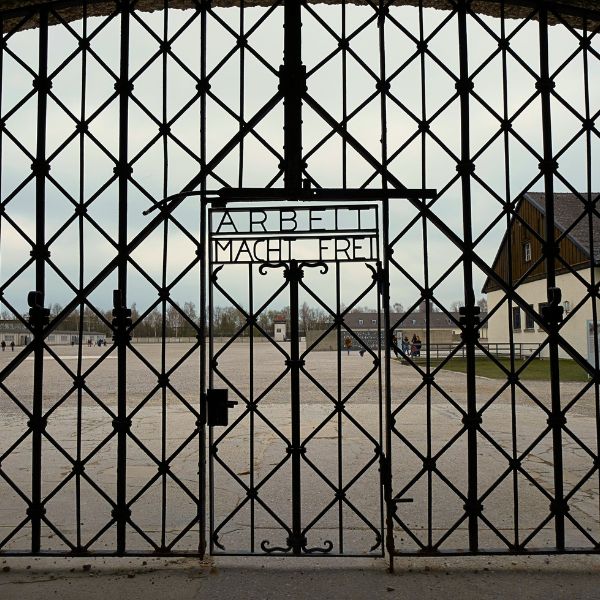 "Arbeit Macht Frei" translates deceptively to, "Work makes you free."
"Arbeit Macht Frei" translates deceptively to, "Work makes you free."Munich Christmas Markets
There’s no time like Christmas time in Munich, Germany. Finding things to do during this festive period is in plentiful supply, with markets popping up all over the city.
Of the ten markets that run from the end of November through Christmas, the Christkindlmarkt (Christmas Market) at Marienplatz is the original.
Set against the backdrop of the Gothic-style town hall, it feels like you’re transported back to the market’s 14th-century beginnings. The Marienplatz market is heavy on Nativity scenes and old Bavarian charm.
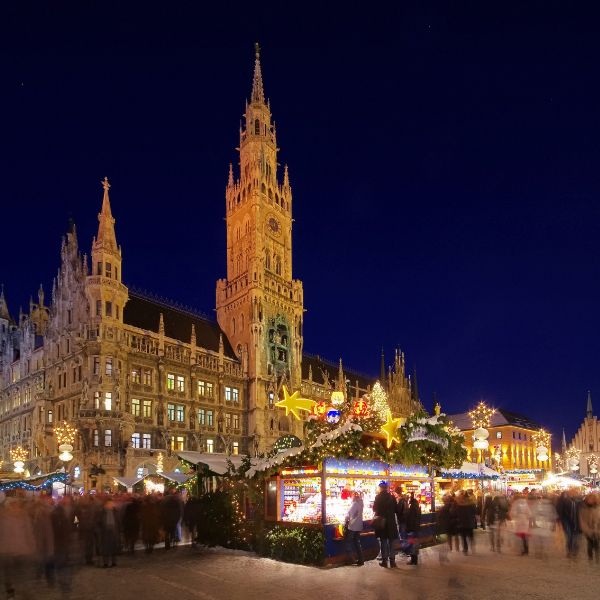
It wouldn’t be Christmas without a culinary smorgasbord on offer. And what better place to indulge in traditional Bavarian food than a festive Munich before the impending New Year’s resolution kicks in?
While the Viktualienmarkt (Victuals Market / Food Market) is relatively new, only dating back three hundred years, its history as a food community grows even stronger during the Christmas Market season.
The market is easily found by its towering blue and white maypole, situated near St. Peter’s Church and only a short stroll from Marienplatz.
In keeping with its edible traditions, the Viktualienmarkt provides a bevy of festive treats along with various musical and dance performances.
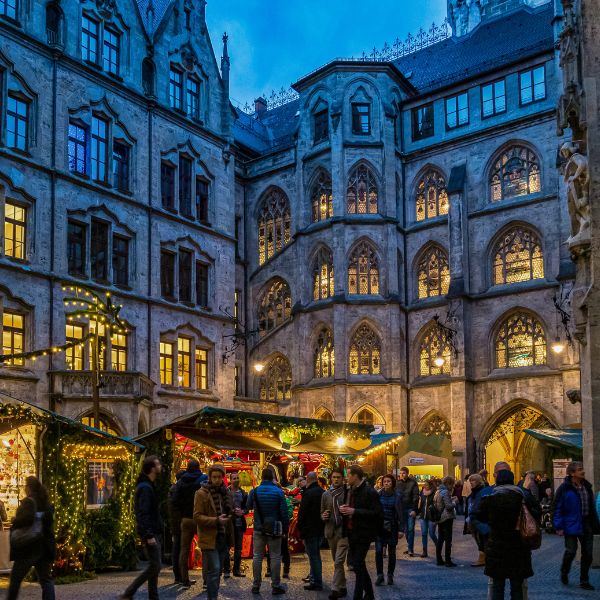
Other markets specialize in ice skating, fairy tale and medieval themes, handcrafted wares, and lots of mulled wine. There’s plenty to explore, and no doubt you’ll find one to suit your tastes.
In Summary
Munich, Germany. Things to do here come in waves, as much of the city center packs in a decent amount of the best places to visit.
Even then, heading outward to the fringes still provides a number of unforgettable experiences.
Whether you’re on a guided tour or going maverick, there are plenty of Munich sightseeing options to scratch your cultural itch.
When was Munich established?
When was Munich established?
1158
What is the land area of Munich?
What is the land area of Munich?
119.9 square miles
What is the population of Munich?
What is the population of Munich?
1,576,000 (2023)
What is the GPS location of Munich?
What is the GPS location of Munich?
48.1351° N, 11.5820° E
What are the closest major cities to Munich?
What are the closest major cities to Munich?
34 miles to Füssen
60 miles to Regensburg
93 miles to Nuremberg
116 miles to Stuttgart
